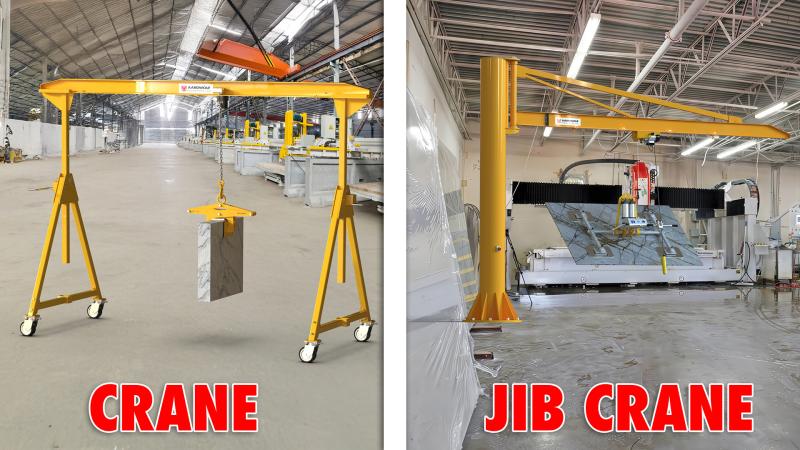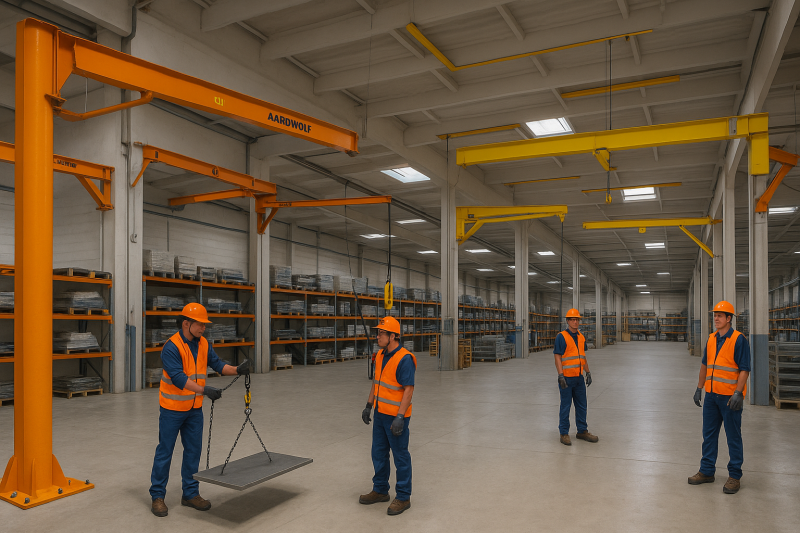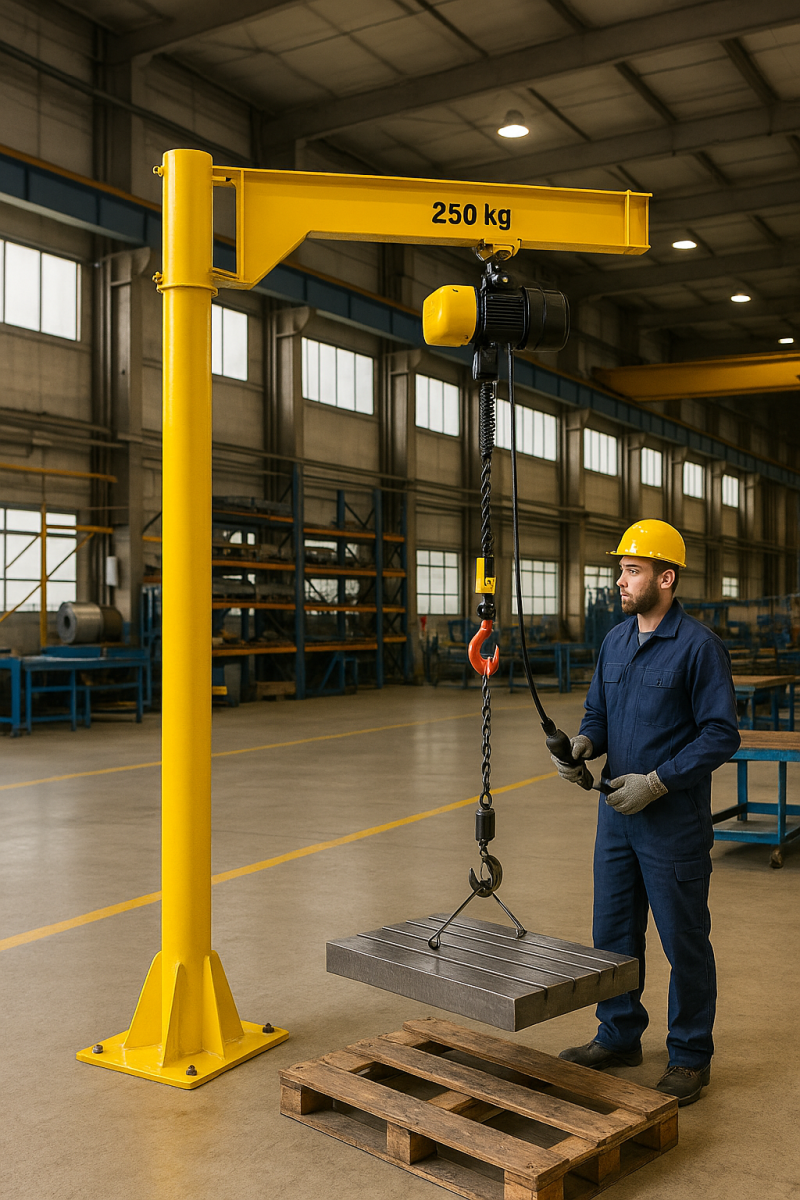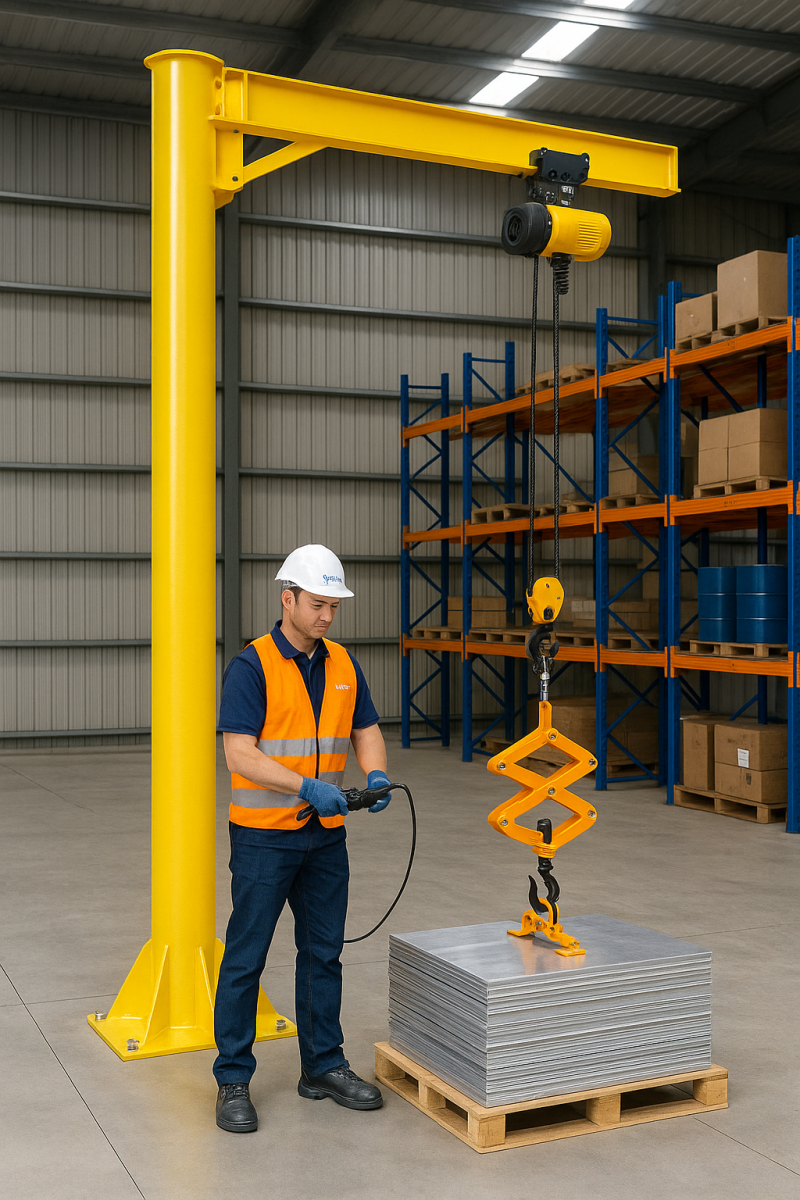



Jib Cranes have emerged as a versatile, affordable solution that checks all the boxes for material handling across a wide range of environments—from compact workshops to large-scale distribution centers.
Whether you opt for a freestanding jib crane, a wall mounted version, or an articulating model, the return on investment is both immediate and long-term. In this article, we’ll explore the key reasons why jib cranes represent a cost-effective investment—and how to choose the right type for your needs.
Discover how Jib cranes help you get more done in less time while minimizing overhead.

One of the biggest advantages of jib cranes is their adaptability. They're widely used in sectors such as:
Manufacturing
Warehousing and logistics
Automotive workshops
Construction and maintenance
Shipyards and ports
These cranes are especially ideal where repetitive lifting operations occur in fixed zones.
Explore how Jib cranes work well in many industries, thanks to their range of motion and customizable design.

Each crane type offers distinct advantages depending on your application, budget, and space constraints.
Requires a foundation, but supports heavy loads and 360° rotation
No dependence on existing building structure
Ideal for indoor or outdoor standalone operations
Low maintenance with long lifespan
Attached to structural walls or columns
Conserves floor space and installation cost
Suitable for tight assembly lines or workstations
Lower price point than freestanding models
Suspended from the ceiling, freeing up all floor area
No need for dedicated structural foundation
Seamlessly integrates with automated material flow
High ROI in clean or space-sensitive facilities
Offers enhanced reach through dual-arm movement
Navigates around columns, machinery, or walls
Increases efficiency in crowded or irregular spaces
Excellent for CNC or injection molding operations
Mounted on a fixed column, great for workbench-level use
Ideal for lightweight, repetitive lifts
Easy to install and relocate
Minimal operating cost over time
If you're unsure which to choose, see why Jib cranes are a smart choice in comparison to other lifting equipment.

Unlike overhead or gantry cranes that require extensive engineering, structural supports, and permanent rail systems, jib cranes can often be installed with minimal civil work. This reduces:
Engineering and construction costs
Installation time
Interruption to facility workflow
And remember, Choosing the right crane is just the first step. Proper planning ensures maximum efficiency and minimum downtime.

Jib cranes are designed for efficiency and ease of use. With a simple pivot mechanism and smooth trolley system, operators can handle heavy loads with minimal effort.
This leads to:
Faster cycle times
Reduced need for multiple workers per lift
Increased safety and reduced injury risk
Consistent load positioning
They’re perfect for operations where Jib cranes lift and shift goods without needing a large setup.

Jib cranes have fewer moving parts compared to other lifting systems. This translates to:
Lower maintenance costs
Reduced need for specialized service
Less downtime due to mechanical failure
Most models require only periodic lubrication and occasional inspections, keeping operational costs low.
Floor space is money—especially in modern facilities. Jib cranes, particularly wall or ceiling-mounted versions, offer compact designs that don’t interfere with workflow.
No floor rails required
No dedicated lift zones
Perfect for workstations, docks, and corners
They truly shine where compact lifting solutions come in handy.
Many jib cranes today are compatible with automation features:
Remote controls
Variable-speed drives
Load sensors and overload alarms
IoT integration for tracking and diagnostics
This gives you the flexibility to upgrade your crane as your operations grow—without needing to replace your entire system.
Want more on this topic? Dive into Compact Lifting Solutions: Why Jib Cranes Are a Smart Investment.

Imagine a small metal fabrication shop. They need to move steel beams between cutting and welding stations. Instead of installing an expensive overhead crane system, they opt for:
A wall-mounted jib crane in the cutting zone
An articulating jib crane near the welding booth
Total cost: A fraction of a gantry crane.
Result: Load transfer time drops by 50%, with zero additional headcount.
If you're seeking a lifting solution that delivers immediate value and long-term savings, Jib Cranes are hard to beat. They’re adaptable, efficient, and cost-effective—offering performance enhancements in both manual and automated facilities.
Whether you're just starting out or looking to scale, these cranes help you grow without growing your footprint or budget.
Looking for your best-fit model? Revisit the benefits of how Jib cranes help you get more done in less time or speak to a specialist about your installation requirements today.
References
1. How to operate a Jib Cranes safely
3. Over brace jib crane wall mounted
5. Is a Jib Crane a Gantry Crane
6. Articulated Jib Crane Wall Mounted
8. Manual Counterbalance Crane
10. Over Braced Jib Crane Column Mounted
Sign up to receive the latest info on new Aardwolf products, special offers and more.
By signing up you agree to receive emails from Aardwolf with news, special offers, promotions and other information. You can unsubscribe at any time.